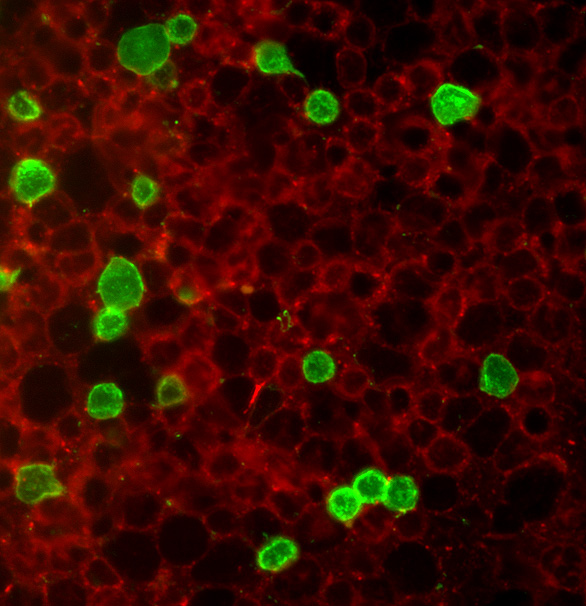Researchers at the University of Virginia School of Medicine have discovered a specific type of immune cell in the bone marrow of mice responsible for an aggressive, poorly understood form of leukemia.
The type of leukemia examined in the study proved particularly hardy and resourceful. After the cancer killed a mouse with the responsible mutation, the researchers placed the leukemic cells in a lab dish, where they continued to survive and even thrive.
“People have been trying to grow leukemia cells in culture, even from patients, and they require other factors to survive. But not these,” said Dr. Maria Luisa S. Sequeira-Lopez, a researcher in the Division of Pediatric Nephrology.
Her co-researcher, Dr. Ariel Gomez, also of the Division of Pediatric Nephrology, marveled at the cells’ ability to tolerate even the least hospitable conditions. “These are extremely aggressive in that they have developed a system to grow and survive no matter what,” he said. “They have immortalized themselves.”
The research provides important insight into B-cell leukemia, the causes of which are poorly understood, and could lead to new and better treatments.
In this case, the loss of a key cellular signaling molecule through mutation appears to trigger the development of the leukemia. More specifically, the loss of the signaling molecule caused a logjam in the production process of B cells, a type of white blood cell. The mutated cells then become cancerous.
The type of cell affected is a renin progenitor. Renin cells, which are also present in the kidney, have traditionally been associated with the control of blood pressure and fluid balance in the body. However, U.Va. investigators found that there are renin progenitors in the bone marrow as well.
The role of bone marrow renin cells in the development of leukemia had been unknown, but the U.Va. researchers were able to determine that the leukemia originated in a special type of white blood cell, a B lymphocyte that expresses renin – a cell the group has dubbed “Brenin-cells.” The researchers then went on to discover and describe the genetic and epigenetic events that lead to the leukemia.
Conventional wisdom is that leukemia arises when a genetic event occurs in a susceptible cell. Over the last decade, much knowledge has been gained regarding the genetic events that drive leukemia; the exact cell of origin, however, remains largely unknown. This study suggests that there may be subsets of cells at increased risk of developing leukemia.
The discovery means the researchers have many exciting avenues to explore. U.Va. pediatrician Dr. Brian C. Belyea, the lead author of the paper outlining the findings, is investigating whether the findings will hold true in humans.
“We would now like to see if this is a relevant model of human disease,” he said. “Our long-term goal is to identify cells at increased risk for leukemia in humans and ultimately develop strategies to monitor and eliminate these cells.”
The findings have been published online by the journal Nature Communications. The article was written by Belyea, Fang Xu, Ellen S. Pentz, Silvia Medrano, Minghong Li, Yan Hu, Stephen Turner, Robin Legallo, Craig A. Jones, Joseph D. Tario, Ping Liang, Kenneth W. Gross, Sequeira-Lopez and Gomez.
Media Contact
Article Information
March 6, 2014
/content/uva-researchers-identify-novel-cell-type-leads-aggressive-leukemia

